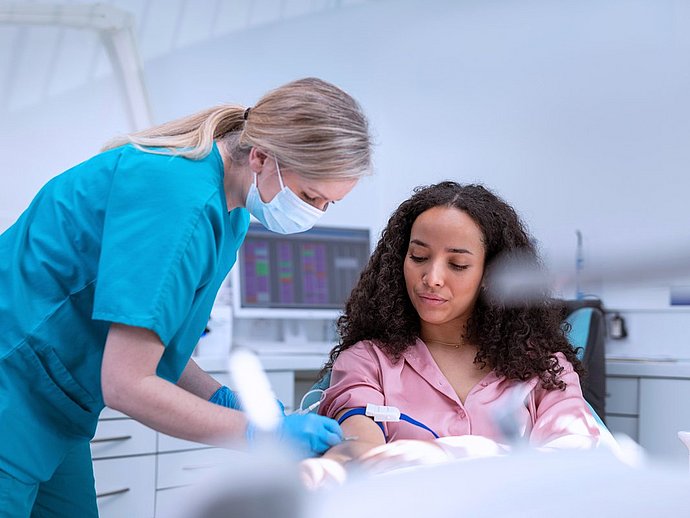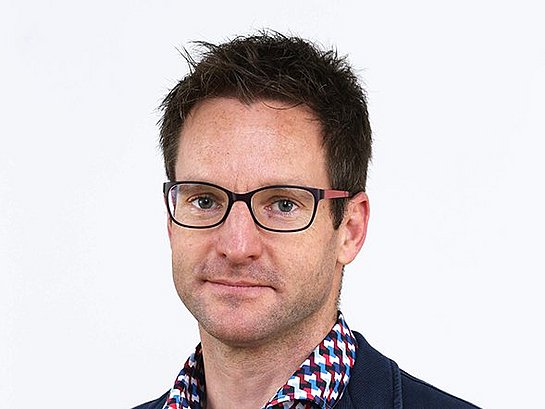What causes the fear of needles?
Run a quick search on the fear of needles, or ‘Trypanophobia’, as it’s officially called, and you’ll find that needle-fear is thought to affect one in four adults. [1] Given that many nurses perform venipuncture several times a shift and you’re talking about a colossal number of nervous patient-nurse interactions.
Speak to an experienced nurse however and they'll likely tell you that needle-fear affects many more than one in four people, with a large percentage displaying clear physical signs of apprehension - even when they claim indifference.
[1] Centers for Disease Control and Prevention: Needle Fears and Phobia – Find Ways to Manage: Needle Fears and Phobia – Find Ways to Manage | CDC
Top causes of needle phobia
“During my trainings more men than women faint!” says Andreas Mayr, an Austrian Master of Science in Nursing, who has trained several thousand clinicians and nurses in the art of safe and smooth venous blood collection during his 30-year career. “Many people are reluctant to say that they’re scared of having blood taken, but you can often see it in their faces,” he adds.
And so it seems that fear of needles is a huge problem in response to a common medical procedure. So what can nurses do to help? The answer, perhaps, lies in understanding where our fear of needles comes from.
There’s variation between individuals of course, but psychologists agree that the most common causes of needle fear are:
- Previous trauma involving needles
- A family history of needle phobia
- Related fears about pain (algophobia), illness (hypochondria), medicine (opiophobia), or germs (mysophobia)
- Anxiety disorders
“An important cause of needle fear is bad previous experiences. People are afraid because they have had first-hand experience of things going wrong.
”
For Andreas Mayr, the first cause on this list is one of the most important than the rest. “An important cause of needle-fear is bad previous experiences. People are afraid because they have had first-hand experience of things going wrong.”
That’s both highly understandable and potentially a hard one to tackle. As medical professionals, we can do many things, but we can’t change the past, and we certainly can’t rewire the subconscious to respond favourably to a previously traumatic stimulus (at least, not within the few minutes it takes to perform a blood draw procedure).
But that’s not to say that those collecting the sample are powerless…
The importance of education
With vigilance, understanding and care, healthcare professionals can set the scene for a blood collection procedure that’s calm and efficient, as well as safe for patients and nurses alike.
Education is paramount. But with health systems still reeling from Covid 19 and its effects on staff retention and funding for training, “many nurses are overstretched” says Andreas, “the situation varies from patient to patient. Healthcare professionals sometimes simply do not have the products and tools to draw blood according to the current state of the art”.
As a lifelong diabetic, it’s no wonder it’s a topic close to Andreas’ heart. “I still get goosebumps when I think of the experiences I had with needles as a child” he says, explaining how he was punctured in the finger, up to ten times a day. "Now a nurse myself, I know how stressful these interactions can be for both parties. And I also know there are some simple things we can do to make the experience less stressful all around."
Practical tips from an experienced nurse
“Before you start”, says Andreas, “you can be thinking about the size and condition of the veins you are working with and the type of needle and associated tube that those veins require. These decisions must be made on an individual patient basis and there is no standard solution.”
He adds: “You need to think about exactly how to prepare your working area how to position the patient's arm to keep the vein open….how you can minimize discomfort during needle entry [it’s all in the specific way you hold the skin] and exactly how far to insert that needle to prevent damage to (the back of) the vein.”
And vein damage is no small thing. Long-term phobia-creation aside, fumbled blood collection can have serious implications on patient health outcomes with patients suffering haematoma and dangerous infections.
With thanks to Andreas Mayr
Andreas Mayr, Master of Science in Nursing is an Intensive Care nurse with 30 years’of experience. He carries out his venepuncture safety training work in association with Greiner Bio-One, a blood-collection consumables provider who many associate with safety.
The healthcare professional's role in reducing patient fear
The kind of clinical confidence witnessed by Andreas in his students plays a role too, he says. “Calm nurse equals calm patient”. Knowing what you’re doing and being confident about how everything works, that’s essential.” And so it seems that successful blood collection is about more than perfecting technique. It extends to knowing how specific brands of needles work, how to operate them smoothly, and having confidence they’ll perform reliably every time.
Education, experience, procedural and product confidence are all crucial for keeping a patient comfortable and preventing the bad experiences that can fuel a negative future response".



